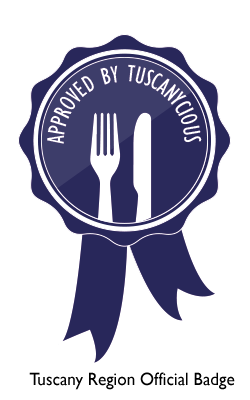As you know, I am travelling at the moment, so I thought of asking some of my favourite food blogger friends to come over and share some of their amazing creations with all of you! I told you I would leave you in great company, right? I am very excited about today’s guest. I have met her through the Secret Recipe Club a few years ago (remember this Spiced Banana Upside Down Cake?) and immediately fell in love with her cooking! Yes, it’s my friend Denise of From Brazil to You! We must have some sort of connection, as she has made a recipe I LOVE, and she didn’t even know it! I have eaten Pastel de Belém, in Belém – near Lisbon, many years ago. I had it from the Jerónimos Monastery, where they were originally created. And I have been wanting to reproduce them at home since then! So, I am double happy today as Denise’s version looks AMAZING and I can’t wait to try them! Please, check out From Brazil to You… it’s filled with amazing recipes! Thanks Denise!
I feel honored to be guest posting today for one of my favorite food blogs, Manu’s Menu! And for this happy occasion, I had to choose something special and close to my heart– something that tastes like childhood: Portuguese custard tarts! Known as Pastel de Nata or Pastel de Belém in Portuguese, these are small tarts made from puff pastry and a rich pastry cream. I hope that this in itself is enough to make you smile!
Although created before the 18th century by Catholic monks in Lisbon, Portugal, these little pieces of heaven quickly became quite popular in several Portuguese-speaking countries such as Brazil, Goa, and Macau, under the name of Portuguese Egg Tarts or Pastel de Ovo… as well as in mainland China and countries with significant Portuguese immigration such as Canada, Australia, Luxembourg, the United States, and France, among others. But if you go to Azores, please call them by their proper name there: Queijadas de nata! 🙂
In my home country of Brazil, these Portuguese custard tarts have been a hit for a long, long time… and I grew up enjoying them all year round, sometimes by themselves and sometimes accompanied by a cup of café au lait. As a descendant of Portuguese ancestors, I imagine that it couldn’t have been any other way! But you know what? No matter where you go in Brazil, you will find these tarts in almost every café or bakery – thank goodness! 🙂
Folks, Portuguese custard tarts are so good that they have been designated as one of the 7 wonders of Portuguese cuisine. And The Guardian, the well-known British national newspaper, pronounced them as the 15th tastiest delicacy in the world. Need I say more?
I have a simpler approach… to me, they look like little rays of sunshine, and taste like heaven! I hope that they will for you as well…
Thank you, Manu, for having me here! Despite my crazy schedule, I have the biggest smile on my face since the day that you kindly invited me to guest post for you. Enjoy your trip, and then let us feast our eyes on your gorgeous travel pictures.
Xx


Portuguese Custard Tarts
Portuguese Custard Tarts - the most classic dessert of Portuguese cuisine!
Ingredients
- 8 large egg yolks
- 200 g about 1 cup granulated sugar
- 2 ½ Tablespoons all-purpose flour or 1¼ Tablespoons of cornstarch
- 500 ml about 16.67 fl. oz whole milk or single cream
- 1 Tablespoon pure vanilla extract
- 450 g puff pastry 2 sheets or 1 package, thawed according to the directions from the package
Instructions
-
First, prepare the filling: Put egg yolks, sugar & flour in a medium, heavy-bottom stainless steel pan (do not use an aluminum pan), and whisk well; then gradually add the milk until mixture is homogeneous and smooth. Cook mixture over medium heat (small burner) or medium-low heat (larger burner), whisking constantly, for about 7 to 10 minutes or until mixture thickens. Remove pan from heat and stir in the vanilla extract. Strain if necessary or if desired (some people don't strain because they prefer the filling lightly "curdled," to give it a rustic appearance and unusual texture. I prefer mine strained for a smooth texture!!!). Transfer custard to a glass/ceramic bowl and cover the top of the custard directly with a plastic sheet (cling film) to prevent a skin from forming. Let custard cool on a rack.
-
Meanwhile, over a lightly floured surface, roll the thawed puff pastry, and cut circles bigger than the mini muffin tin border. Line each tin with 1 circle of pastry (you don´t need to butter the tins if dark metal or nonstick, but lightly butter if metal is shiny). Then trim off the excess, passing the blade of a knife around the top border of the tins. Roll and cut more circles with the puff pastry dough leftovers!
-
Preheat oven to 500 degrees F (about 260 degrees C).
-
Fill the pastry-lined tins with the custard almost (but not quite) to the top and bake on the middle rack for about 10 to 11 minutes or until custard is golden brown. Since ovens differ a lot, don´t forget to keep a close eye on them! Any leftover custard can be refrigerated and used to fill a small amount of donuts, profiteroles, fruit tarts, or other treats.
-
Remove tin(s) from the oven, let them cool a bit (about 5 minutes or so), and then carefully unmold with the help of a knife. You can dust Portuguese custard tarts with powdered sugar or ground cinnamon if desired -- although in Brazil we don't dust them at all! The tarts can be eaten warm or at room temperature (best), and may be accompanied by coffee, tea, or milk. This recipe yields about 32 mini Portuguese custard tarts or 16 standard-size (in this last case, it will take about 15-18 minutes to bake them).
Recipe Notes
The original recipe for Portuguese custard tarts has undergone various alterations throughout the years, including the shape of the pastry cup and the filling.
If desired, you can make puff pastry from scratch -- although I personally think that it doesn't make a big difference!
The pastry cream used as a filling for Portuguese custard tarts is rich because it contains a good amount of egg yolks. As for flavoring the pastry cream filling, instead of vanilla extract you can use a piece of lemon peel or a cinnamon stick while preparing the filling, which of course have to be removed once the cream is ready. Substituting vanilla bean instead of the vanilla extract gives these tarts an even richer vanilla flavor—in this case, the vanilla bean should be added to the other ingredients before cooking the filling.
Although not traditional, I do prefer making my tarts with vanilla bean because then the flavor stands out on the very first day that the tarts are made, while the crust is still crispy. On the other hand, when using vanilla extract, the flavor richens and is much better on the second day; however, by then the crust softens.


















I absolutely adore Pastel de Nata! Ever since we tasted them in Portugal, we realised just how simple but incredibly good they are! What’s more, I’m obsessed with egg yolk recipes and with 8 egg yolks, this makes a perfect macaronivore’s baking life very happy. Super guest post, Denise. Manu – looking forward to hearing about your trip to Japan, as we’re thinking of going there in the summer… cheers!
Oh, rats! I just made a cake that used a ton of egg whites! I would have loved to try these beautiful tarts with my leftover eggs. Next time. Hope you’re having a wonderful trip, Manu!
What a gorgeous looking dish! I love everything Denise makes, and this is no exception. Terrific guest post! Thanks.
Excellent recipe with simple ingredients! They look like you can drizzle honey and cinnamon on top, did you ever try that Denise?:)
Wonderful recipe and wonderful blog Manu, nice to “meet” you:)
Awesome guest post…I just came form Denise blog…
Nice meeting you Manu…have a great week 🙂
Now that Alesah is in a cafe sipping a drink this lovely custard appeared on the screen! LOL, what a perfect match it would have been. Thanks, Denise! And have a safe and fun travel Manu! 🙂
Julie & Alesah
Gourmet Getaways xx
Hi, Manu! Thanks for inviting me to guest post for you.
I hope both you and your audience make these one of these days and enjoy… Have a safe, fun travel! xx
Lovely! I’ve been wanting to make these for years! Thanks for a great recipe and the introduction to your friend, Denise. Hi Denise : )